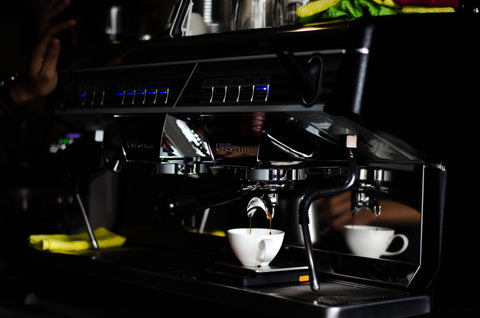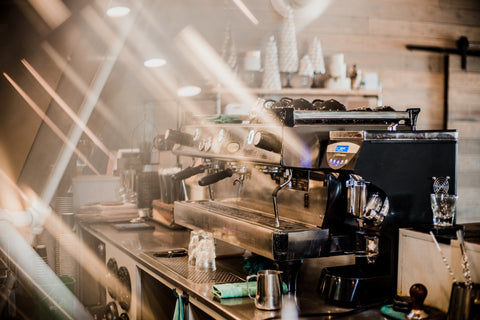Why Do Most Espresso Machines Break? Instructions To Fix Common Problems.
Espresso machines are pretty simple devices to handle. You add the coffee, fill the water tank, and push the button. For the most part, they function smoothly and work perfectly well. But even something as simple as an Espresso machine can break down if you don’t maintain it.

Photo by Jessy Smith on Unsplash
The most common reasons for an Espresso machine’s breakdown are:
- Lack of maintenance
- Subpar machine components
- Poor quality of water
- Improper alignment
- Scale buildup
- Clogged filters
- Worn-out pump
- Leaking gaskets
- Failed heating element
Owning an Espresso machine can be a rewarding experience, especially if your early morning bestie is your cup of joe. However, maintaining your Espresso machine is crucial to keep your coffee flowing daily.
We will examine some of the most common reasons why Espresso machines break down and give tips on fixing and preventing them from breaking down in the first place.
- What Are The Most Common Reasons That Cause Espresso Machines To Break Down?
- Poor Maintenance: Though coffee machines are built tough, they are likely to cause problems without adequate maintenance.
Regular maintenance (such as properly cleaning the portafilter, steam wand, and tamping basket) is crucial for their smooth performance in the long run.
- Scale Buildup: Over time, mineral deposits can build up inside the Espresso machine, causing slow water flow, temperature drop, leakages, and blocked pipes. So, descale your device at regular intervals and never postpone them.
- Clogged Filters: If you find your portafilters clogged, do a simple test to determine the problem.
Run the machine without the coffee grounds and see if the filters work well. If it does, then the problem could be with your coffee grind. If it does not, then consider giving a good scrub to your portafilter.
- Leaking Gaskets: If the leaking is from the bottom, check the seal of the water tank. There is a good possibility that it is worn out as it tends to get brittle, broken, or damaged as time goes by.
If the leakage is at the portafilter, check the group head gasket. If it has worn out, replacing it will solve the issue.

- Failed Heating Element: The heating element is responsible for heating the water in your Espresso machine. Continuously using the machine can overheat it and cause the thermal cutout to trip. Pressing the tripper will fix the problem.
It could also be a broken electrical circuit or some other repair as well.
If you are having trouble with your Espresso machine, it is important to find out what is causing the problem before you try to fix it yourself.
If you have no clue, taking your coffeemaker to a qualified technician for servicing is always the best option.
- Subpar Machine Parts: Machine components of poor quality also lead to premature breakdown of the machine. So, it is best to opt for a decent machine if you want to avoid the hassle of repair and damage later.
- Wear and Tear: Every machine has limitations, and so does your coffee machine; it is not eternal. Its performance deteriorates with age.
Every coffee machine has an ideal time of best performance, after which it will start getting repaired and eventually have to be put away. So, be realistic about your expectations with your coffee machine.
2. How To Fix A Broken Espresso Machine?
Even the best Espresso machines require occasional maintenance and repairs. Fortunately, many common problems can be fixed relatively quickly, even if you have little experience working with coffee machines.
If your machine starts making strange noises, you should first check for any loose screws or other objects that may be causing the sound.

Photo by tabitha turner on Unsplash
If everything looks tight and secure, the next step is cleaning the machine according to the manufacturer’s instructions.
If your machine is leaking water, the most likely cause is a problem with the seals around the water chamber. These seals can become worn out or damaged over time, allowing water to escape. The good news is that replacement seals are readily available and relatively easy to install.
Try some FAQs available in your manual to fix the machine yourself. Most often, you’ll find it is a problem that you can address for yourself.
If the problem persists, call the service center or a certified technician for assistance.
3. How Should I Descale My Espresso Machine?
Descaling your Espresso machine is essential for running it smoothly and ensuring that your coffee tastes its best. There are a few different methods that you can use to descale your appliance. Still, one of the most effective ones is using a mixture of vinegar and water.
Fill the reservoir with equal parts of vinegar and water, and run the machine as you generally make coffee. After the cycle is complete, flush the coffeemaker several times with fresh water to remove any residual vinegar taste.
Regular descaling will help extend your Espresso machine’s lifespan and keep it looking and performing like new.
4. How To Clean Your Espresso Machine Filters?
A good Espresso is about more than just the beans. Clean your portafilters regularly to ensure you make the best coffee every time.

Photo by Jennifer Bedoya on Unsplash
After each use, thoroughly clean the portafilter and the filter basket by removing them, running them through hot water, and giving them a good scrub with mild soap.
If you have neglected the cleaning a few times, soak them in a cleaning tablet solution to make them look new.
Taking good care of the filter ensures you the best taste of your coffee. And the process takes just a few minutes.
Regular maintenance is key to keeping your Espresso machine running smoothly.
In this article, we’ve outlined some simple tips to help you regularly descale and clean your coffeemaker. We’ve also provided instructions to fix common problems that may occur with your appliance. So, don’t lose heart if your Espresso machine breaks down – take a deep breath and follow these easy steps to get it back up and running in no time!

